-
 Bitcoin
Bitcoin $118300
-0.58% -
 Ethereum
Ethereum $3825
0.11% -
 XRP
XRP $3.137
-0.71% -
 Tether USDt
Tether USDt $0.9999
-0.01% -
 BNB
BNB $803.9
-3.37% -
 Solana
Solana $181.5
-1.94% -
 USDC
USDC $0.9999
0.01% -
 Dogecoin
Dogecoin $0.2238
-2.51% -
 TRON
TRON $0.3358
2.12% -
 Cardano
Cardano $0.7844
-2.16% -
 Hyperliquid
Hyperliquid $43.31
-1.48% -
 Sui
Sui $3.807
-4.04% -
 Stellar
Stellar $0.4203
-1.96% -
 Chainlink
Chainlink $17.79
-3.00% -
 Bitcoin Cash
Bitcoin Cash $567.8
-1.34% -
 Hedera
Hedera $0.2614
-4.30% -
 Avalanche
Avalanche $24.19
-4.46% -
 Litecoin
Litecoin $109.2
-0.74% -
 UNUS SED LEO
UNUS SED LEO $8.969
-0.01% -
 Toncoin
Toncoin $3.404
3.97% -
 Ethena USDe
Ethena USDe $1.001
-0.01% -
 Shiba Inu
Shiba Inu $0.00001307
-3.19% -
 Uniswap
Uniswap $10.33
-1.23% -
 Polkadot
Polkadot $3.884
-4.06% -
 Monero
Monero $312.9
-1.87% -
 Dai
Dai $1.000
0.01% -
 Bitget Token
Bitget Token $4.537
-2.24% -
 Pepe
Pepe $0.00001156
-3.40% -
 Cronos
Cronos $0.1437
-0.89% -
 Aave
Aave $282.8
-2.77%
How long does it take for Coinbase's cryptocurrency deposits to arrive?
Coinbase crypto deposits' arrival times vary; factors include cryptocurrency type (Litecoin is faster than Bitcoin), network congestion, and your deposit method. Estimates are provided, but delays are possible, especially during high transaction volumes.
Mar 04, 2025 at 07:07 pm
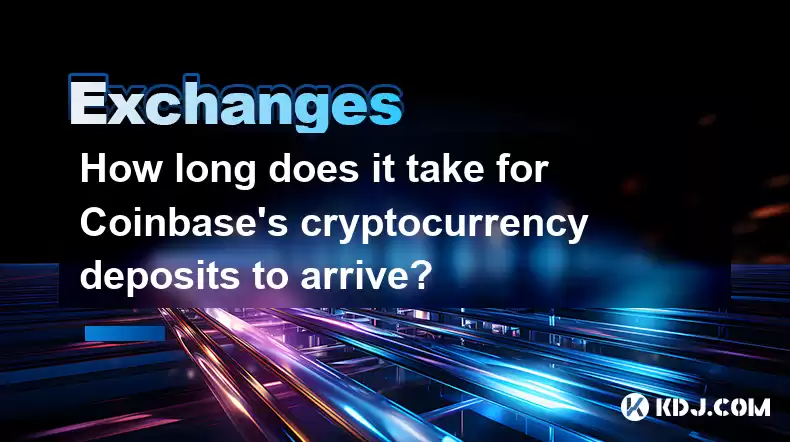
Key Points:
- Coinbase deposit times vary greatly depending on the cryptocurrency, network congestion, and your chosen deposit method.
- Faster cryptocurrencies like Litecoin and Ripple generally have quicker confirmation times than Bitcoin.
- Network congestion can significantly delay deposit confirmations, especially during periods of high transaction volume.
- Coinbase provides estimated arrival times, but these are not guarantees.
- Understanding blockchain technology and its limitations is crucial for managing expectations regarding deposit speeds.
How Long Does it Take for Coinbase's Cryptocurrency Deposits to Arrive?
The time it takes for cryptocurrency deposits to arrive in your Coinbase account is not fixed. It depends on several interconnected factors, making it impossible to give a single definitive answer. The most significant factors are the specific cryptocurrency being deposited, the current network congestion on that cryptocurrency's blockchain, and the efficiency of your deposit method.
Let's explore the cryptocurrency factor. Some cryptocurrencies are designed for faster transactions than others. For instance, Litecoin and Ripple (XRP) typically have much quicker confirmation times compared to Bitcoin. Bitcoin, while the most well-known, can experience significant delays due to its block generation time and transaction volume. Ethereum, another popular cryptocurrency, also shares this variability in transaction processing times. Smaller, lesser-known cryptocurrencies may also have varying confirmation speeds depending on their specific network architecture and usage.
Network congestion plays a vital role. The blockchain is a decentralized, public ledger, and when many transactions are being processed simultaneously, it creates congestion. This congestion leads to longer wait times for transaction confirmations, regardless of the cryptocurrency's inherent speed. Periods of high market volatility or major news events often correlate with increased network congestion and slower deposit times.
Your chosen deposit method can also influence the arrival time. While Coinbase generally only accepts deposits directly from another wallet or exchange, the way you initiate the transfer affects processing time. A poorly formatted transaction or an incorrect address can result in delays or even the complete loss of your funds. Always double-check the receiving address before sending any cryptocurrency.
Coinbase provides estimated arrival times for deposits. However, these are only estimates and should not be interpreted as guarantees. The actual time can vary considerably. It’s always prudent to be patient and allow ample time for your deposit to process, especially during periods of high network activity.
Understanding how blockchain technology works is key to comprehending deposit times. Cryptocurrency transactions aren't instantly processed like traditional bank transfers. They must be verified and added to a block on the blockchain, a process that takes time and depends on the network's workload. Each block added to the chain adds a layer of security and confirmation to the transaction.
The process of verifying a transaction often involves miners (in Proof-of-Work blockchains like Bitcoin) or validators (in Proof-of-Stake blockchains like many altcoins). These individuals or nodes contribute computing power to validate transactions and add them to the blockchain. The more congested the network, the longer this verification process takes.
It's also worth noting that Coinbase itself plays a role. Once the transaction is confirmed on the blockchain, Coinbase needs to process it and credit your account. This internal processing usually takes a relatively short time, but can add a few extra minutes to the overall deposit time.
Here’s a breakdown of potential scenarios:
- Fast Deposits: You might see your Litecoin or Ripple deposit reflected in your Coinbase account within minutes. This is especially true during periods of low network congestion.
- Moderate Deposits: Bitcoin and Ethereum deposits can take anywhere from 10 minutes to a few hours, depending on network conditions. Expect longer times during periods of high transaction volume.
- Slow Deposits: During times of extreme network congestion, even fast cryptocurrencies can experience significant delays, potentially stretching into several hours or even longer.
- Failed Deposits: Incorrectly sending funds to the wrong address will result in the loss of your cryptocurrency. Always double-check the receiving address before sending any funds.
Common Questions and Answers:
Q: What should I do if my cryptocurrency deposit hasn't arrived after a long time?
A: First, check the transaction hash on the blockchain explorer for your specific cryptocurrency. This will confirm whether the transaction has been successfully broadcast to the network. If it hasn't, contact Coinbase support immediately. If it has been broadcast, but is taking unusually long, check for network congestion and be patient, but again, consider contacting Coinbase support if the delay is excessive.
Q: Can I speed up my cryptocurrency deposit?
A: You can't directly speed up the blockchain confirmation process. However, choosing a faster cryptocurrency for deposits can reduce wait times. Also, ensuring you're using the correct address and providing enough transaction fees (gas fees for Ethereum) can sometimes help expedite processing.
Q: Are there any fees associated with cryptocurrency deposits on Coinbase?
A: While Coinbase generally doesn't charge fees for deposits themselves, the underlying blockchain network often charges transaction fees. These fees vary depending on the cryptocurrency and the network congestion. These fees are paid by the sender, so you'll need sufficient funds to cover both the deposit amount and the associated network fees.
Q: What if my deposit is lost or stolen?
A: Double-checking the receiving address before sending funds is crucial. If a transaction is sent to the wrong address, recovery is extremely difficult, if not impossible. If you suspect your deposit has been lost or stolen, contact Coinbase support immediately to initiate an investigation. However, remember that responsibility for confirming addresses lies with the sender.
Q: How can I track my cryptocurrency deposit?
A: Coinbase usually provides a transaction ID or hash after you initiate a deposit. You can use this ID to track the progress of your transaction on the relevant blockchain explorer (e.g., Blockchain.com for Bitcoin, etherscan.io for Ethereum). This allows you to see the status of your transaction independently of Coinbase’s interface.
Disclaimer:info@kdj.com
The information provided is not trading advice. kdj.com does not assume any responsibility for any investments made based on the information provided in this article. Cryptocurrencies are highly volatile and it is highly recommended that you invest with caution after thorough research!
If you believe that the content used on this website infringes your copyright, please contact us immediately (info@kdj.com) and we will delete it promptly.
- UNITE, KuCoin, and the Future of Mobile Gaming: A New York Minute on Web3
- 2025-07-30 16:30:12
- Strategy, Bitcoin, Investment: Riding the Crypto Wave Like a Pro
- 2025-07-30 16:30:12
- JD.com, Jcoin, and Stablecoins: Hong Kong's Regulatory Embrace
- 2025-07-30 16:50:11
- Pi Network, Onramp Money, and Wallet Fails: What's the Deal?
- 2025-07-30 16:50:11
- PENGU Price Primed for Liftoff? Bullish Rally Signals Emerge
- 2025-07-30 16:55:12
- Dogecoin's Wild Ride: Token Unlocks, Circulation, and the $1 Dream
- 2025-07-30 16:55:12
Related knowledge
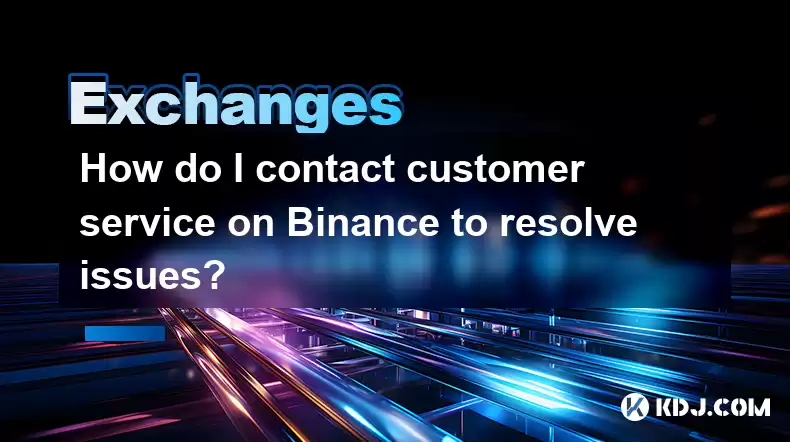
How do I contact customer service on Binance to resolve issues?
Mar 16,2025 at 04:30am
Key Points:Binance's customer service is primarily self-service, relying heavily on its help center and FAQs.Direct contact methods are limited, with ...
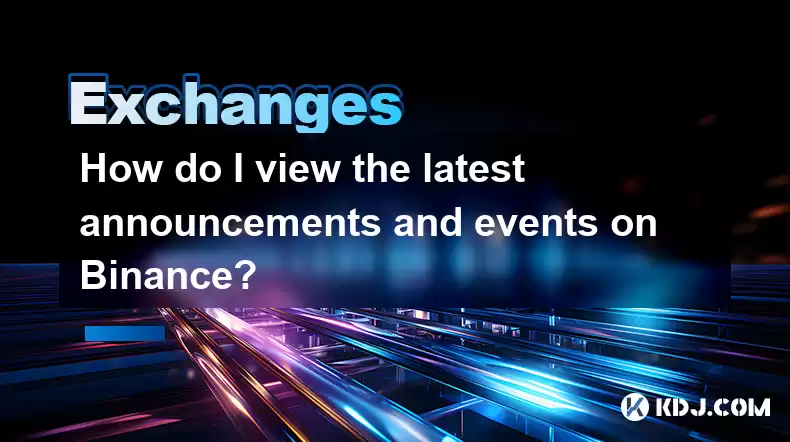
How do I view the latest announcements and events on Binance?
Mar 18,2025 at 10:18pm
Key Points:Binance utilizes multiple channels for disseminating announcements and events.The official Binance website is the primary source.Binance's ...
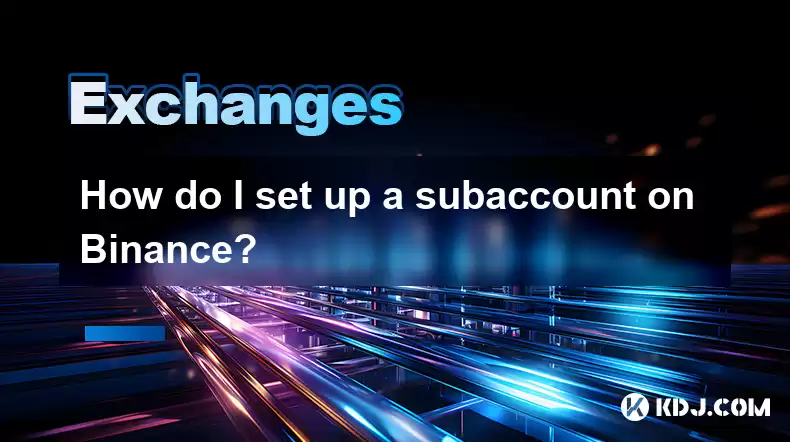
How do I set up a subaccount on Binance?
Mar 14,2025 at 01:50pm
Key Points:Binance does not offer traditional "subaccounts" in the sense of separate accounts with independent logins under a master account.Instead, ...

How do I view the list of supported currencies on Binance?
Mar 15,2025 at 05:35am
Key Points:Binance supports a vast and frequently updated list of cryptocurrencies. There's no single, static list.Finding supported currencies requir...
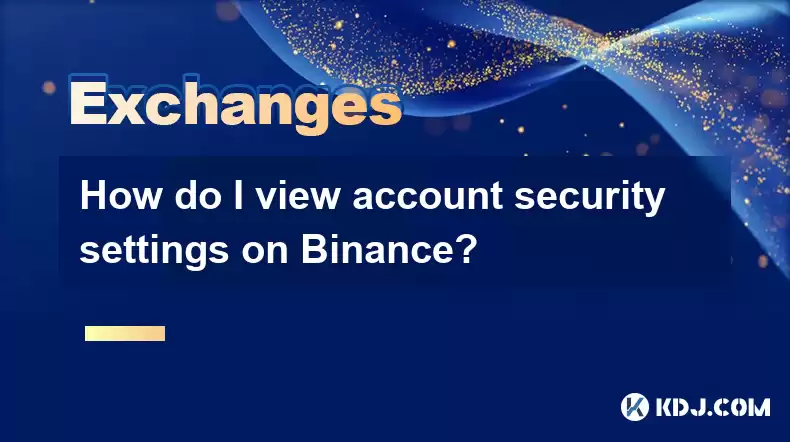
How do I view account security settings on Binance?
Mar 15,2025 at 08:40pm
Key Points:Binance's security settings are spread across multiple sections of your account. This article will guide you through each crucial area.Unde...
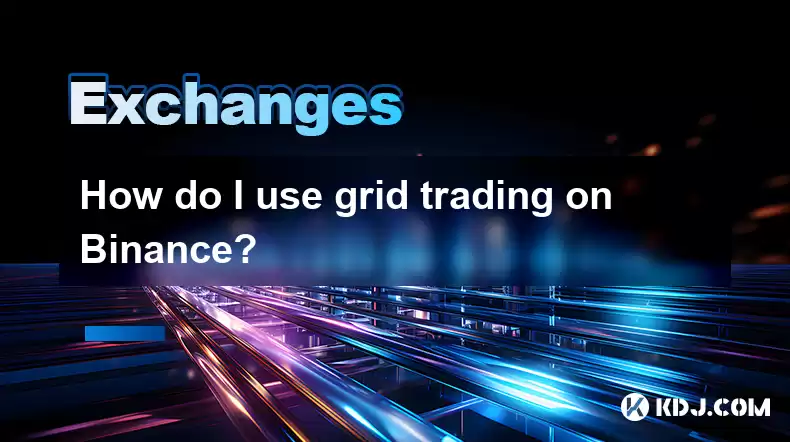
How do I use grid trading on Binance?
Mar 14,2025 at 04:25pm
Key Points:Grid trading on Binance involves automatically buying low and selling high within a defined price range.Binance offers a built-in grid trad...

How do I contact customer service on Binance to resolve issues?
Mar 16,2025 at 04:30am
Key Points:Binance's customer service is primarily self-service, relying heavily on its help center and FAQs.Direct contact methods are limited, with ...

How do I view the latest announcements and events on Binance?
Mar 18,2025 at 10:18pm
Key Points:Binance utilizes multiple channels for disseminating announcements and events.The official Binance website is the primary source.Binance's ...

How do I set up a subaccount on Binance?
Mar 14,2025 at 01:50pm
Key Points:Binance does not offer traditional "subaccounts" in the sense of separate accounts with independent logins under a master account.Instead, ...

How do I view the list of supported currencies on Binance?
Mar 15,2025 at 05:35am
Key Points:Binance supports a vast and frequently updated list of cryptocurrencies. There's no single, static list.Finding supported currencies requir...

How do I view account security settings on Binance?
Mar 15,2025 at 08:40pm
Key Points:Binance's security settings are spread across multiple sections of your account. This article will guide you through each crucial area.Unde...

How do I use grid trading on Binance?
Mar 14,2025 at 04:25pm
Key Points:Grid trading on Binance involves automatically buying low and selling high within a defined price range.Binance offers a built-in grid trad...
See all articles

























































































